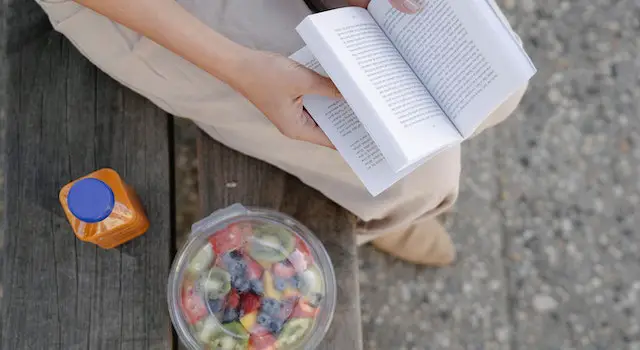How To Read Expiration Dates On Salad Dressing?
Food waste is a huge problem, and the USDA estimates that nearly a third of our food supply gets wasted because people are confused about what expiration dates mean.
Most shelf-stable foods are safe to eat past their best-by date, but they may become stale or have an off taste over time.
Best Before
When you open a bottle of salad dressing, it’s important to read the expiration date on the package carefully. This will allow you to avoid wasting money on a bottle of dressing that is no longer good.
Most foods have a ‘best before’ date on the packaging, which indicates how long they will retain their quality if stored correctly. However, they don’t have to be consumed on or after the ‘best before’ date.
Generally speaking, it’s best to consume fresh foods before their ‘best before’ dates and to throw away anything that has expired. This is because food items past their ‘best before’ date will be in poorer condition and a hazard to health.
Some food items, such as ice cream, can last longer than their ‘best before’ date if they are kept in the right conditions and not freezer burnt or smelly. In general, ice cream will stay safe for about six months after its ‘best before’ date if it is properly stored and doesn’t become syrupy or messy.
Salad dressings are similar to many other foods in that they must be refrigerated to maintain their quality and safety. If you purchase a refrigerated dressing, it should be used within a few weeks of the ‘best before’ date, but it can be stored for a couple of more months in your refrigerator.
In the same way, shelf-stable salad dressings do not need to be refrigerated after opening and can be stored for a few months in your cupboard. However, this will be a hazard to your health, as they could begin to spoil.
For these reasons, it is best to always consume a refrigerated dressing before the ‘best before’ date or to throw it out if you don’t use it on that day. You should also make sure that you check the ‘best before’ date on any new bottles or containers of salad dressing to ensure that they are still fresh and edible.
A lot of people think that a ‘best before’ date is an indication of how fresh a food item is, and it’s true that some types of products aren’t at their optimum quality or nutritional value after that date, but this does not mean they are unsafe to eat. For example, powdered milk will remain at its optimum nutritional value for six months after the ‘best before’ date.
Use By:
When shopping for salad dressings, you often see an expiration date printed on the label. This is a good way to know whether your dressing will be good for use.
Expiration dates on salad dressings are typically three to six months after the label is opened. However, this will vary depending on the type of dressing you purchase and how long it’s been stored in the refrigerator. For example, dairy-based options like blue cheese and Caesar dressings can last one to two months after opening, while oil-based options like Italian and balsamic vinaigrette can last up to four months.
The best way to ensure your dressing lasts as long as possible is to store it in an air-tight container. This will help to limit the amount of time it’s exposed to moisture and air, which can cause the salad dressing to spoil.
You should also keep your salad dressing in the refrigerator, as this will extend its shelf life. You can freeze it if you cannot store it in the refrigerator. However, be aware that freezing the dressing may make it less effective.
Another good way to extend the shelf life of your salad dressing is to use a reusable bottle. These bottles are incredibly efficient, as they prevent spills and control the dressing flow. They also have air-tight lids to maximize the quality of your dressing.
If you have a lot of different dressings that you’re trying to keep fresh, it’s important to distinguish them from each other. This can be done with simple labels that you can tape or glue onto the bottles.
The other way to ensure your salad dressing stays fresh is to store it in a cool, dark place. This will help to slow the growth of bacteria that can cause food poisoning.
Remember that expired dressings are unsafe to eat, so you should discard them immediately. A rotten smell, discolored moldy growths on the surface of the dressing, and lumps in your dressing are all signs that it’s past its prime.
Sell By
When it comes to reading expiration dates on salad dressings, you’ll want to read the labels carefully and track whether a particular bottle or container has passed its shelf life. Salad dressings are typically made with oils and vinegar and can lose their potency over time.
You can easily check a bottle or container’s expiration date by looking at the “sell by” label on the side of the product. This label lets retailers know how long to keep a certain item for sale.
While most of these expiration dates aren’t used for food safety purposes, they help manufacturers and grocery stores track inventory and keep products in stock for consumers. As a result, you’ll often see these dates on items such as bakery goods, meats, seafood, deli items, and snack foods.
For example, milk and eggs typically have a sell-by date that tells you how long they should be kept in the fridge to be safe to eat. This is a good idea because milk and eggs can quickly go bad.
Another way to read an expiration date on a salad dressing is to look at the “best by” or “use by” label. These aren’t necessarily safety dates for the food; they are simply manufacturer estimates of when the product will taste at its peak quality.
If a salad dressing has a best-by date, it’s still okay to use it after that date if you store it properly in the refrigerator. However, if you open the bottle and notice that it has changed in appearance, odor, or taste, it’s probably best to discard it.
This is especially true for oil-based dressings, which are more susceptible to spoilage than milk-based salad dressings like ranch or thousand islands.
Dry-mix salad dressings aren’t typically refrigerated, so they don’t need an expiration date on the packaging, but if you do purchase these types of ready-to-use dressings, it is recommended that you store them in a cool, dark place for up to three months or more. It’s also recommended that you keep them sealed tightly after opening them, so they don’t get spoiled.
Closed Code
Often, you may notice a jumble of numbers and letters on your bottle of salad dressing. That’s a sign that it’s time to toss it in the trash.
There are several ways to read these digits; each can tell you something about the product in question. For example, if you see a code that displays the date of manufacture or the time it took to make your product – say, three years – you’ll be in a better position to assess how much longer your bottle of dressing will last.
The best way to decipher a date code is to look up a manufacturer’s website to learn more about their manufacturing process. This will provide you with all the information you need to read the small print and determine the best method for your specific product brand.
To help you make the most of the tidbits above of information, we’ve compiled an easy-to-follow guide to reading your product’s expiration dates. With a little practice, you’ll be able to read your expiration labels with the confidence of a master detective. By using this technique, you’ll be able to minimize waste while optimizing your food’s shelf life and quality.
Reading expiration dates on salad dressings is important to ensure you consume safe and fresh products.
Here Are Some Tips On How To Read Expiration Dates On Salad Dressings:
Look for the “Best by” date:
Salad dressings usually have a “best by” date printed on the label. This date indicates the recommended period for consuming the product at its best quality.
Check the storage:
The “best by” date assumes that the salad dressing has been stored correctly. Check the label for instructions on storing the product, and ensure that it is stored in the recommended conditions to ensure its longevity.
Understand the “Use by” date:
Some salad dressings may have a “use by” date instead of a “best by” date. This indicates the last date the product is safe to consume. Discarding the salad dressing if the “use by” date has passed is important.
Check for signs of spoilage:
Salad dressings can spoil before expiration if they have not been stored correctly or have been contaminated. Check the appearance and smell of the salad dressing before using it. If the dressing appears moldy or smells off, discard it immediately.
Consider the type of salad dressing:
Different salad dressings may have different expiration dates. For example, creamy dressings may have a shorter shelf life than oil-based dressings. Check the label for specific instructions on storage and shelf life.
In conclusion, reading expiration dates on salad dressings is important to ensure you consume safe and fresh products. Look for the “best by” or “use by” date, check the storage conditions, understand the type of dressing, and check for signs of spoilage before using the dressing. By following these tips, you can ensure your salad dressing is safe to consume and avoid food-borne illnesses.
FAQ’s
How do you read a date code?
The year is represented by the first two numerals, and the month by the final one or two. The factory code and the date code could be located in two different places. A bag created in April 1989 would have a date code of 894. Like other coding systems from the 1980s, the original date codes were merely 3–4 numbers and no factory identification.
How do you read the 7 digit expiration date?
The first four digits of a seven-digit Julian number represent the year. The year will be the first two digits if it is just five digits. 2018 will display as “2018” in a seven-digit Julian date format, but “18” in a five-digit Julian date format.
How long after expiration date is salad dressing good?
Depending on a number of factors listed below, salad dressings can last anywhere between one and four months beyond the date stated on the bottle. If left unopened or properly stored in the refrigerator, salad dressing has a shelf life that extends past the sell by or best by dates.
How long is unopened salad dressing good for after expiration date?
The only exceptions are salad dressings, which can be stored in the refrigerator for up to three months after opening and mayonnaise, which should only be kept for two months at most after opening. Salad dressing can be used up to a year after its expiration date if it hasn’t been opened.
Do salad dressings expire?
Why do dressings have expiry dates?
Bandages. Both sticky and non-adhesive bandages have a shelf life. In the event of excessive bleeding, bandages can save lives by shielding wounds from infectious pathogens. Expiring bandages lose their sterility and adhesiveness and are ineffective in treating wounds.




















